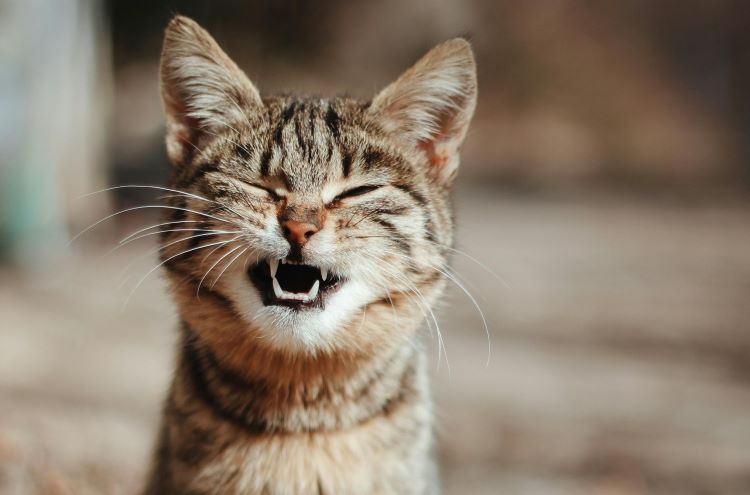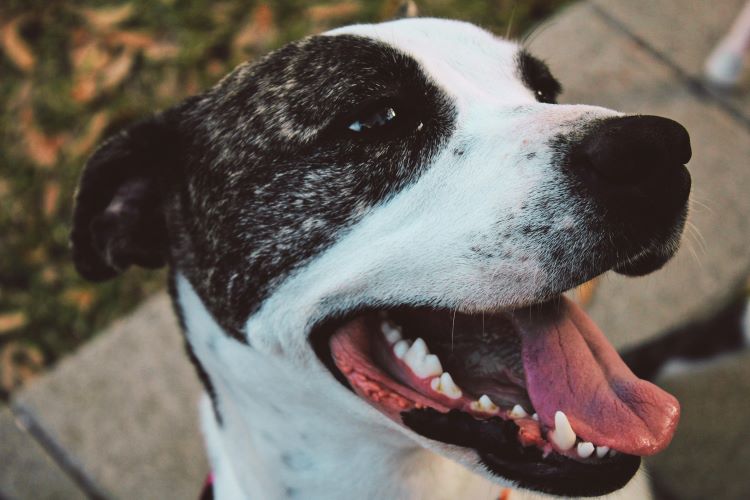Ready to help treat your pet to a healthy life?
Does Pet Insurance Cover Dental Care for Dogs & Cats?
By : Brianna Gunter | Published Feb 20, 2025

If you’re like most people, you’ve heard your entire life that taking care of your teeth is a must. And, along with brushing and flossing, you likely also have dental insurance that helps you give your teeth the medical care they need to stay healthy. But what about when it comes to your pet? They won’t be raising a toothbrush to their mouth with their paw anytime soon, but can they get dental insurance too?
The short answer is, yes, they can! Though it doesn’t look exactly like your own dental policy. While pet dental insurance isn’t generally available as its own standalone plan, some pet insurance providers offer it as an option or have it already included as part of your pet’s overall coverage.
What is pet insurance?
Pet insurance is a type of coverage that helps offset the cost of veterinary care for pets. Similar to human health insurance, pet insurance is there to help with medical costs to ensure your dog or cat can get the treatment they need. Pet owners pay a monthly or annual premium, and, in return, the insurance provider pays for a percentage of eligible vet costs.
Coverage varies depending on the provider as well as the type of pet insurance plan. If you’re new to the world of pet insurance, you’ll find your options ranging from basic accident-only policies to comprehensive plans that include hereditary conditions and alternative therapies.
So, with this in mind, what about dental care? As you may have guessed because coverage varies so widely between providers, there is not one-size-fits-all answer. Some pet insurers cover only basic dental care costs, while others focus on “surprise” costs like those associated with dental illnesses and injuries. We’ll get more into those differences in just a moment, but the takeaway here is that not all policies are equal. It’s a good idea to compare providers and carefully review coverage details to make the best decision for your pet’s health.
Pet insurance that covers dental care
Not all pet insurance providers cover dental-related illnesses, and many offer coverage only as add-ons to your existing plan. However, Trupanion dental coverage is already included in your policy — no need to add anything! With Trupanion, your pet is covered for all dental illnesses and injuries, providing they are not already showing signs/symptoms at the start of coverage (are not pre-existing conditions) and you’ve followed important routine dental care steps. This means taking your pet in for annual dental exams (and cleanings, if recommended) as well as adhering to any other oral care practices recommended by your pet’s veterinarian.
Learn more about Trupanion dental coverage and how having a policy can add peace of mind to your pet’s oral health.
Routine dental coverage vs. dental illness coverage
Just like humans, pets need regular care to maintain their oral health and prevent serious, potentially painful conditions. Your pet can’t brush their own teeth, of course, so routine care means doing what you can as a pet owner to help out. This may include:
- Brushing with pet-safe toothpaste to remove plaque and reduce tartar buildup
- Dental treats and chew toys to help keep teeth clean and promote gum health
- Providing easy access to clean drinking water
- Regular dental check-ups with a veterinarian to help detect issues early
- Annual dental cleanings with your veterinarian or a specialist
Pet insurance or a pet wellness plan that covers routine care typically only covers dental check-ups and/or annual cleanings. It may or may not cover extractions. However, this kind of coverage often falls short with more serious dental disease and injuries.
That’s where robust coverage tailored for new, unexpected conditions is of value. You can plan for your pet’s routine oral care, but you can’t predict when a serious dental disease or injury may occur. These situations can go far beyond what you’ve budgeted for your pet’s routine care, so having a pet insurance plan that covers new dental conditions can be a lifesaver.
Many veterinary practices offer their own in-house wellness plans for basic dental care, so you may want to consider this as a backer to your pet insurance plan.

Common dental conditions covered by pet insurance
Again, a dental wellness plan is going to cover only routine, simple costs like cleanings. However, robust dental coverage with a pet insurance plan like Trupanion will cover new, unexpected dental conditions as long as routine veterinary care is followed and there are no signs of the condition prior to coverage.
Some examples of conditions that may be eligible for coverage include:
- Tooth extractions
- Abscesses
- Tooth resorption
- Advanced dentistry (like dental caps and crowns)
- Tooth/jaw fractures
- Feline Odontoclastic Resorptive Lesions (FORLs)
Breeds that may benefit the most from dental insurance
Pet dental insurance — that is, pet insurance that covers dental costs — may be especially beneficial for certain dog and cat breeds. These are breeds that are more prone to developing serious dental illnesses due to their biology. These include flat-faced (brachycephalic) dogs and cats, pets with naturally smaller mouth structures (like toy dog breeds), breeds with sensitive gums, breeds who retain their baby teeth longer, and breeds who may just be more susceptible to saliva ph imbalances, among other issues.
Examples of at-risk dog and cat breeds include the following.
Dogs who may benefit more from dental coverage
- Chihuahua
- Dachshund
- Maltese
- Pomeranian
- Shih Tzu
- Yorkshire Terrier
- Boston Terrier
- Boxer
- Bulldogs (both English and French)
- Pekingese
- Pugs
Cats who may benefit more from dental coverage
- Abyssinian
- British Shorthair
- Exotic Shorthair
- Himalayan
- Maine Coon
- Persian
- Scottish Fold
- Siamese
Have a pet at higher risk? Getting pet insurance with dental coverage is a great first step, but it’s also crucial to adopt healthy habits. Work with your veterinarian learn how to take care of your pet’s teeth and gums in between vet visits, and be sure to ask about tailoring their diet to help.

Learn more about the health conditions your pet may be at higher risk of in our breed guide.
